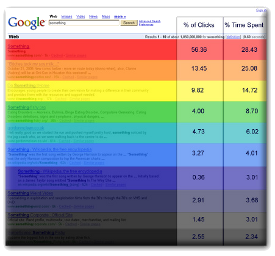Creating and Executing a Brilliant Marketing Plan
We did the research, we built the site, now let’s get your site the traffic it needs. CPC’s, SEO, Viral, & referral campaigns, we present a full on attack centered around one common goal, targeting marketing efforts that convert the best. This keeps your costs low and sales high!
Picking your spots

In Step 1: research, we chose board keyword that your site will be competing in. Now its time to expand this wide list of keywords. This effort is to determine the keywords that we will use, both in optimizing the website and in the PPC (pay per click) advertising campaign. Using tools like Google Adwords and Google Trends, we can create large lists of potential short-tail and long tail keywords. Whats the difference between “Long Tail Keywords” and “Short Tail keywords”? Example: “Cars” would be an example of a short-tail keyword, while “best rated fuel efficient cars 2012” would be an example of a long-tail keyword. In regards to marketing, the major difference between long tail keywords and short tail keywords is the average conversion rates of a short tail keyword vs. long tail keywords. Short tail keywords often convert at a much lower rate than long tail keywords. The long tail of a keyword represents a far greater number of searches than the head. In a 2008 report, Bill Tancer, general manager of global research at Hitwise, revealed that for any given topic, the top 100 keywords account for just 5.7% of all website traffic – while long tail keywords account for the remaining 94.3%! Lets take a look at a example.

Example: A person searching for “earphones” is less likely to convert then a person searching for “the deluxe sony 1.5 easy fit earphones”. The long tail search indicates that the customer has already done product research and knows that product he wishes to purchase. The customer who typed in “earphones” is still unsure of the products being offered and is not sure what he wants to buy. This leads to less conversions from people typing in just “earphones”. Secondly, Long tail keywords generally have less competition for advertisements than the head keywords, resulting in cheaper ads.
Our Goal is to combine SEO efforts with CPC efforts to create the perfect balance. By targeting the Short-tail keywords through SEO efforts we are able to target the large amounts of traffic that come from Short-tails without having to pay for every click. We then create a CPC (cost per click) campaign to target the less expensive, higher converting long-tail keywords.
Predicting Traffic

Can you guys really tell me how much traffic I will be getting? Of course we can! That’s what makes us great at what we do. But don’t just take our word for it, we are going to show you exactly how we do it. First, we will take a keyword and plug it into a tool like Adword’s keyword research tool. This tool will tell us exactly how many queries a keyword will get in a month. Then, by applying the data discovered by a 3 year research study done by Cornell University in which they observed the click behaviors of searchers (see picture located to the right), we can get a very good idea of how many clicks you will get if you were located in a particular spot.
Here is a example. According to Google’s keyword tool, the keyword “buy cars” gets around 823,000 queries a month. Based on the data from the Cornell Research Study we can determine that the number one position in the Google rankings from that keyword would generate 460,880 visitors to your site a month. Now that’s a lot of traffic!
Forecasting Sales

Yes its true, we can also predict how much revenue will be generated from each one of these keywords. This is the key to our entire marketing process. We will determine not only which keywords will be profitable ones for you, we will tell you much much you will make from each one. How can we predict how much revenue you will be making before we ever even build your site? Here’s how. We take the traffic variables that we got from the step above and apply two important variable to them.
First is the conversion rate. Your conversion rate, or the amount of sales divided by the number of visitors, will let us know how many of those visitors will turn into leads, or sales for you. A recent study conducted by Forrester as presented in an article from Target Marketing Magazine states, “Forrester research indicates that the average conversion rate – that is the ratio of orders to overall site visits – is 2.9 percent.” For our predictions we generally use a conversion rate of 1% to ensure we predict low and never high.
Second, we take the average order size. This can vary tremendously depending on the industry or even the keyword. We determine this by analyzing your competitors, remember we did this back in step 1: research, then talking to you about what you expect your prices to be. Now that we have your average order size we can just plug in the numbers to determine your total revenue from that keyword. Lets look at a example.

As mention above in “predicting Traffic”, we know that having the top spot in Google for the keyword “buy cars” will generate 460,880 visitors to your site a month. If we convert 1% of those visitors, the we will make 4,608 sales. Now, lets apply a hypothetical average order size. Lets say $12,000. 4,608 sales at $12,000 is $55,305,600. Cha-Ching!
Sounds great right? Well there is actually one last thing. What is it going to cost me to get the number one spot in Google for the keyword “buy cars”?
This is what separates us apart from the rest. Our experienced team of experts evaluates all your competitors positioning to determine exactly how much it will cost to fit into each position on the SERP’s. We will analyze every position to determine which positions contain profitability. If we apply the formula above to a keyword and determine that the number one position will generate $300 a month and the number two position will generate $100 a month and it takes $400 a month to obtain the number one position for a keyword and only $50 a month for the number two position. Then we will aim to obtain the number two position. Aiming toward profitability is the key.
Repeat the Process
We repeat this same process for every single keyword opportunity to determine exactly which keywords will be included in your marketing campaign. Once we have your full list of keywords, we are finally ready execute your successful marketing campaign.
AB testing

AB testing is a process we use to constantly test new ways to improve your conversion rates. This process involves trying different design elements, different slogan’s, different calls to action, etc. We constantly test which elements perform better to make sure your conversion rates stay as high as possible.


